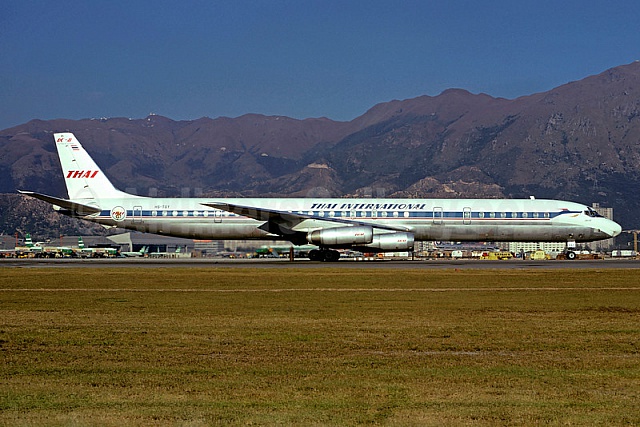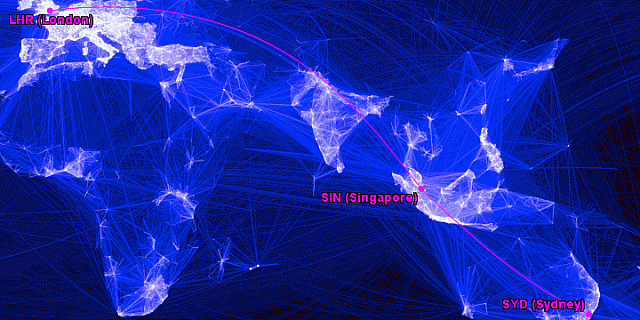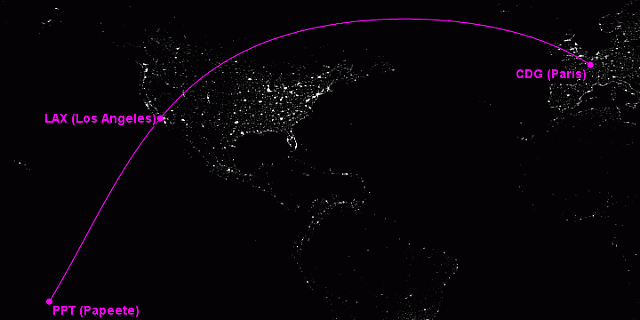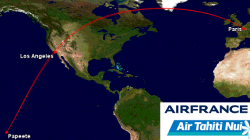SAS to ax year-around Copenhagen – Bangkok route
Starting April 07, 2013, Scandinavian Air System (SAS) will be cancelling its 63-year old year around service between Copenhagen Kastrup airport (CPH) in Denmark and Bangkok Suvarnabhumi airport (BKK) in Thailand. This is quite a sad move considering that SAS and Thai International Airways, both founding members of Star Alliance, have long enjoyed a close working relationship ever since SAS commenced service to Thailand in 1949. According to sources, Bangkok was SAS’ first destination in the Far East.
According to businesstraveller.com, the route suspension is only seasonal, and will operate once again during the IATA Winter (Northern Hemisphere). Presumably, the Airbus A340-300 aircraft that will be pulled from the Copenhagen-Bangkok route will be used to launch SAS’ new services to San Francisco next spring, as was posted last July.
Despite SAS’ longstanding history in Thailand, the airline is facing challenges with high labor costs, and growth in competition from the Gulf Coast carriers have put a strain on its Europe-Asia services. Given that Thailand is a historically lower-yielding destination, it creates a difficult competitive environment for legacy carriers struggling with high-costs in a largely price-elastic market.
Scandinavia will still be linked nonstop to Bangkok via Thai Airways, which flies to Oslo, Stockholm and Copenhagen.
The current schedule is as follows (source: airlineroute.net)
SK973 CPH2250 – 1525+1BKK 343 D
SK972 BKK0025 – 0625CPH 343 D
Discontinued 07APR13

Israeli flag carrier El Al ‘looks to end Cairo flights’
El Al Israel Airlines, the national carrier of Israel, has vowed to cancel flights to Cairo, Egypt citing extremely low demand. While seemingly a simple decision on paper, the decision is actually ingrained in politics due to the 1979 Israel-Egypt peace treaty which mandates flights to the country.
In a message to Israel’s foreign minister, El AL CEO Eliezer Shkedi said that the flights between Tel Aviv and Cairo are nearly empty, which is placing a huge drain on the carrier as it cannot afford the high security and operating costs. Presumably, few Israelis have felt safe visiting Cairo, particularly in light of the revolution activity that occurred last year.
“Without any commercial justification and in light of the high economic cost of operating this line, El Al cannot continue to bear these heavy expenses, and therefore is intending to stop operating the route to Cairo immediately,”
-El AL CEO Eliezer Shakedi
The Tel Aviv – Cairo route has been in operation for more than three decades, operating at least once a week. However, that schedule has been reduced even further ever since the overthrow of former Egyptian president Hosni Mubarak in February 2011, as the Israeli airline opted to continue the service on a reduced basis to meet basic commercial needs.
Regardless, the near-empty load factors have driven El Al to request assistance from the Israeli government to sponsor/offset the costs of operating such flights, especially since the political situation in Egypt has become more unstable again in recent days.
Air India extends Toronto suspension into Q1 2013
Flag carrier Air India has extended the suspension of its nonstop Delhi to Toronto route until March 1, 2013. The carrier initially intended to resume AI 187/188 on October 28, 2012, but due to the pilot strike situation, the resumption date has been pushed back.
The Air India flight originates in Amritsar, allegedly is very popular among the Punjabi community living in the Greater Toronto Area (GTA) and according to Tribune India, 90 percent of the passenger makeup is NRIs, or Non-Residents of India.
Politically, the service suspension is not resting well with the Indian community in Canada. Air India suspended its nonstop services from India to Chicago, Newark and New York over the summer, instead routing passengers through European gateways at Frankfurt, London and Paris, but has since resumed the nonstop flights with Toronto being the only exception in North America. Air India continues to be plagued by HR issues as hundreds of its long-haul pilots went on strike in early May.
British Airways says it won’t kill the Kangaroo Route
On Monday, The Australian reported that U.K. flag carrier British Airways remains committed to the Australian market, despite speculation that it may terminate its remaining daily flight from London to Sydney (via Singapore) once its Joint Services Agreement (JSA) with Qantas Airways ends in March 2013.
British Airways and Qantas have long enjoyed a revenue-sharing agreement on the London to Australia corridor, known as the “Kangaroo Route” since 1995. However, two weeks ago, Qantas announced that it would end the JSA with British Airways in favor of a new partnership with Emirates Airline. As part of the strategy shift away from operating its metal on the “Kangaroo route” over Sydney, Qantas will be deploying 14-weekly “all Airbus 380” services over Dubai as part of the “Falcon route.”
Whether or not British Airways intends to keep flying to Australia on its own metal or on one of its codeshare partners remains to be determined.

Air France may ax its Tahiti services
French national carrier Air France is considering cancelling its thrice-weekly nonstop flights between Los Angeles and Papeete (PPT) Tahiti as it has been “chronically losing money” on this route “for the past seven years,” according to an article in Le Figaro. Air France currently employs 89 personnel staffed exclusively to operate this leg, and is currently in discussions with these individuals to see if any agreements can be made in order to negotiate the cost structure of operating this route. Otherwise, Air France may have to ditch the market. This move is in conjunction with Air France’s Transformation 2015 programme designed to regain competitiveness after years of successive losses. Part of this strategy involves eliminating 5,000 jobs, according to the article.
Despite the fact that Air France generally achieves a high load factor on its Tahiti route, the airline is unable to break even on this flight, which is most likely directly attributable to the high overhead costs of flying a less-than-daily service with such a large head count of personnel. Air Frances’ main competitor on this route, Polynesian flag carrier Air Tahiti Nui, also struggles to achieve profitability on this same route.
The larger issue at hand could be attributed to French Polynesia and it’s struggle to attract higher tourism volumes. Allegedly, discretionary pricing for vacationers in Tahiti generally is few and far between. There have been massive construction initiatives over the years to spur the growth of USD $1000 per-night overwater bungalows which require high-yielding tourism volumes. Challenges and complexities arise for consumers who are willing to spend that amount, and expect to be rewarded by flying on airlines and staying with hotel chains that can reward them with frequent flier miles and loyalty points, yet are forced to stay at locations unaffiliated with chains.
Rumor has it that Air France’s union and management are going to meet for the next six weeks and resolve the issue to hopefully work out a solution to improve the financial situation. A partnership with Air Tahiti Nui may be in the cards, so that one carrier operates the LAX-PPT leg and the other on LAX-CDG to provide optimal feed and network connections. Or, alternatively, Air France may simply close its crew base at Papeete but keep the station open by sending a Paris-based crew to Tahiti.

The total travel time involves a 11h25m flight from CDG to LAX, a 2h20m layover then an onward 8h flight from LAX to PPT.



